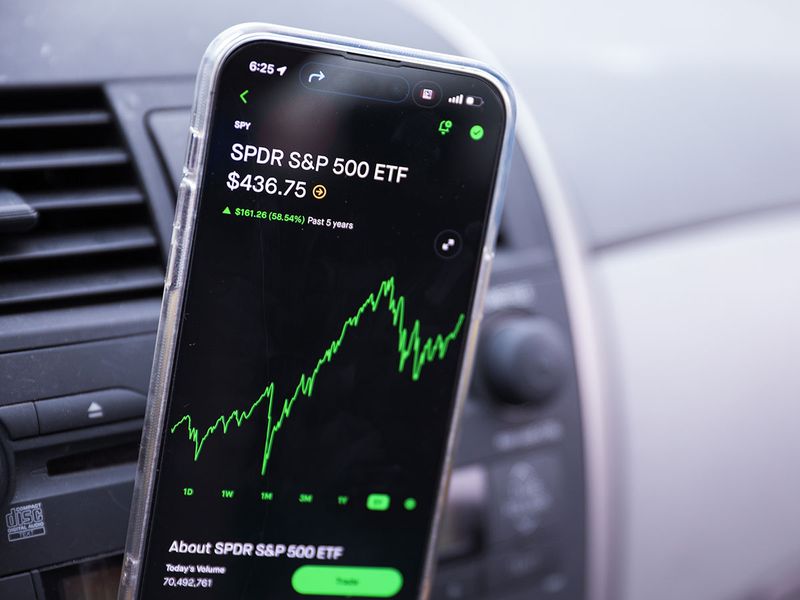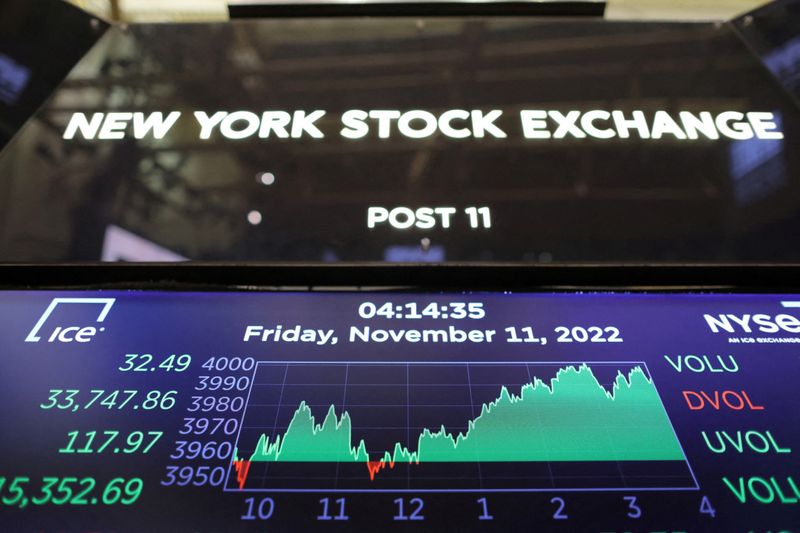
Stocks have taken a hit in recent days, losing more than $6 trillion in value over the last 15 trading days till Monday.
The reason: Concens over the perceived lag in the US Federal Reserve’s policy support for a slowing economy and slowing demand for AI, which is driving investors towards the safety of bonds.
The selloff has gripped Wall Street: Nasdaq 100 futures plummeted more than 6 per cent, while S&P 500 contracts dropped over 3 per cent on Monday. The Dow fell over 1,000 points. And they say that when Ameica sneezes, the world catches a cold.
Over the last two years, stocks surged on AI hopes, but minimal profits and readiness issues have led to a sell-off in major tech stocks like Apple, Nvidia, Microsoft, Meta, Amazon, and Alphabet. Even Warren Buffett’s Berkshire Hathaway has cut its Apple stake. Investors are shifting to safer assets like bonds. It’s not a market crash, but fear lingers. All major Asian and European markets also saw substantial declines on Monday.
Stocks somewhat recovered on Tuesday, recouping losses as investors took a breather from recession fears and Japanese equities rallied. Major indices broke a three-day losing streak, with all sectors positive. But it's not out of the woods, as volatility remains.
$6.4 trillion wiped off stocks
In the last three weeks, up to $6.4 trillion was wiped off global stocks, according to Nigel Green, CEO of deVere Group.
“Despite something of a rebound on Tuesday, the foundations of market confidence have been deeply shaken,” Green stated in an email to Gulf News. “Markets will continue to panic until they see signs of the Fed – the central bank of the world’s largest economy – responding. The time for hesitation is over; the Fed must act decisively to avert further instability.”
This figure represents the combined market capitalisation of all publicly-traded companies worldwide.
The value fluctuates based on market conditions, economic factors, and investor sentiment.
From pessimism to optimism
Since January 2024, the US stock market has experienced significant volatility. The S&P 500 had a strong start in 2024, buoyed by investor optimism about the economy and low volatility. Jakob Westh Christensen, market analyst at eToro, predicted last month that given the tech-giants’ already high margins and 'pricey' valuations, further upside was untenable then.
“Keeping in mind that this comes after an aggressive bull run that has lasted more than one and half years, and a continuation at the same pace seems unsustainable,” said Christensen.
As of July 30, the strong gains among the 'Magnificent 7' stocks have resulted in these seven stocks making up close to 30 per cent of the S&P 500 market value. “This results in natural concentration risk for the market and in many investors' portfolios,” Christensen warned.
Then it happened: A domino effect of tech stocks sell-off immediately followed disappointing earnings reports and a weaker-than-expected US jobs report in early August.

According to Investopedia, the Cboe Volatility Index (VIX) spiked to its highest level since late 2022, reflecting increased market fears about a weakening economy and concerns over the Fed’s delayed actions, and doubts about big bets on AI.
Can money be made when stocks are down? The answer is yes.
While it might seem counterintuitive, it’s possible to profit even when the stock market is declining.
Here are five ways:
1. Short selling
How it works: This investment strategy is also called “shorting”, which involves borrowing shares, selling them at the current price, and buying them back later when the price drops, profiting from the difference. Take note that shoting is not allowed in cetain jurisdictions.
Risk: High risk, as the price could rise – instead of fall.
2. Put options
How it works: Put options are financial contracts that give the holder the right, but not the obligation, to sell a specified amount of an underlying asset (like stocks) at a predetermined price (the strike price) within a specific time period. If the stock price falls below the strike price, you profit.
Example: Imagine you own shares of XYZ Corp, currently trading at $100. You buy a put option with a strike price of $90, expiring in one month, for a premium of $5 per share.
Scenario 1: XYZ's price falls to $80. You can sell your shares at $90, exercising your put option, avoiding a bigger loss.
Scenario 2: XYZ’s price stays above $90. You don't exercise the option, losing only the $5 premium.
This way, put options act as a form of insurance against a decline in the asset’s price.
Risk: Options have “time decay”, meaning their value decreases as the expiration date approaches.
3. Inverse ETFs
How it works: These funds move in the opposite direction of the underlying index. When the market falls, these exchange-trade funds (ETFs) rise. ProShares Short S&P 500 (SH) is a common example of an inverse ETF. In simple tems, it aims to deliver the opposite daily return of the S&P 500 Index.
So: If the S&P 500 drops 1 per cent on a given day, the ProShares Short S&P 500 ETF would ideally rise by approximately 1 per cent. Inverse ETFs are designed for short-term trading and not long-term investing.
Risk: Inverse ETFs can be volatile, and their returns are often magnified compared to the underlying index.
4. Dividend-paying stocks
How it works: While stock prices may decline, dividend-paying stocks continue to generate income. Investors who focus on companies with a history of consistent dividends win in this dividends-driven investing strategy.
Investing in dividend-paying stocks can be particularly beneficial due to a steady income and long-term growth prospects it offers. This is good for investors seeking a regular income stream, such as retirees or those looking to supplement their earnings.
Risk: Dividend payments can be reduced or eliminated during economic downturns.

5. Cost averaging
How it works: This involves investing a fixed amount of money in a particular investment on a regular schedule, regardless of the share price. When prices are low, you buy more shares. It is also known as “dollar cost averaging” (DCA).
In short, it involes buying stocks, ETFs, or funds in smaller, regular intervals instead of a lump sum. This reduces the risk of purchasing at a high price and averages out the investment cost over time. For example, investing $1,200 in $100 monthly increments can yield more shares than a one-time investment, especially if prices fluctuate. It helps mitigate risk, encourages consistent investing, and is often used in retirement plans.
Risk: This is a long-term strategy and may not yield immediate profits.
“The Federal Reserve must cut rates now, and at the September and November meetings,” warns the CEO of one of the world’s largest independent financial advisory and asset management organisations.
“An emergency rate cut before the September meeting would be a strong signal that the Fed is prepared to restore confidence and counteract destabilising forces.”
The retracing of some losses in stock markets should not lull the Fed into a false sense of security. Instead, it should be viewed as a temporary reprieve.
“Markets will continue to panic until they see signs of the Fed – the central bank of the world’s largest economy – responding.
“The time for hesitation is over; the Fed must act decisively to avert further instability.”
Note: Different strategies have varying levels of risk. This is not an investment advice andis for informational purposes only. Consult a licensed investment advisor or broker for your specific needs and risk profile.










